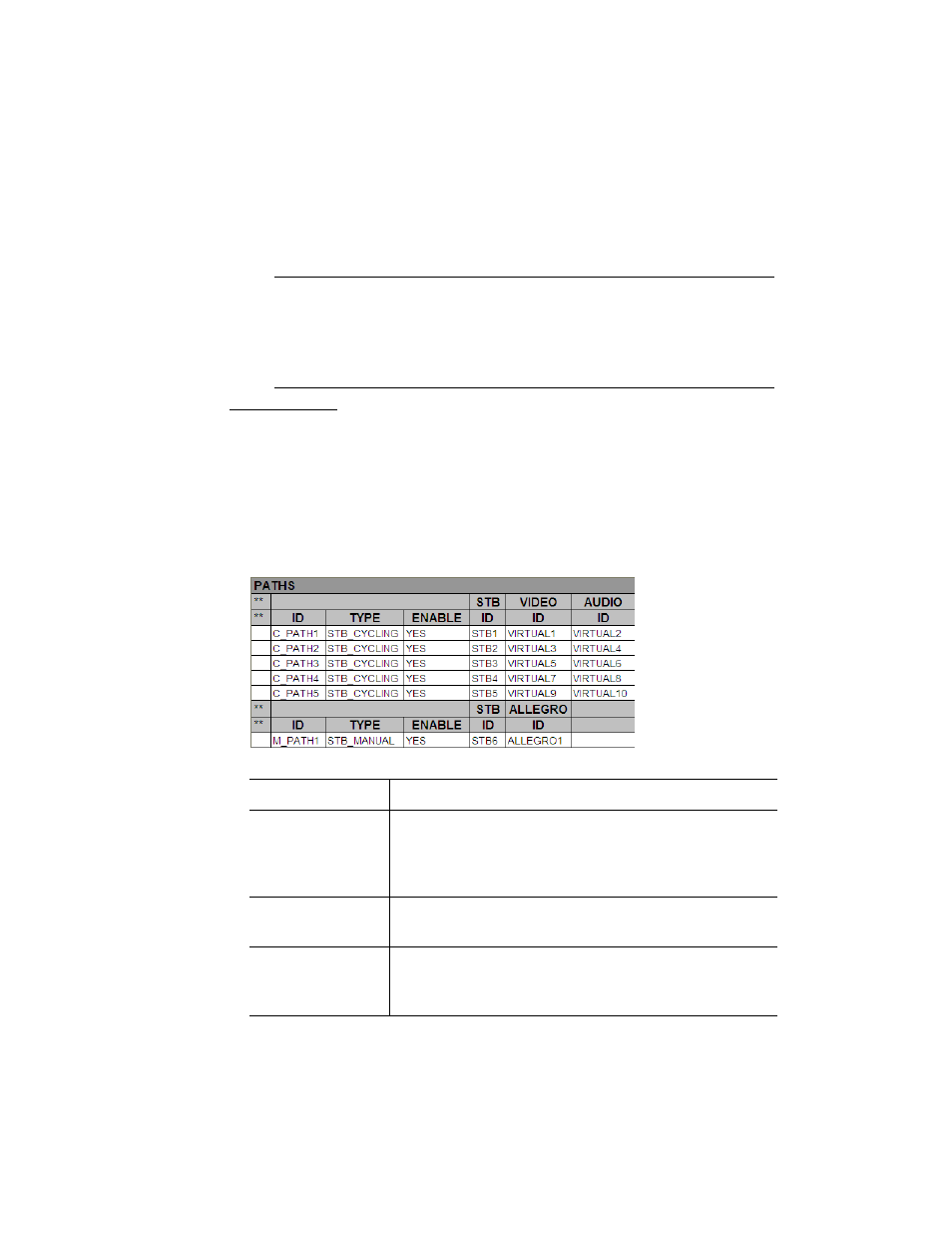Paths worksheet – Grass Valley iControlEdge v.1.20 Installation User Manual
Page 73

Paths Worksheet
69
that will be associated with a given cycling set-top box. Also specify appropriate alarm debouncing
parameters for each cycler (DURATION, OCCURRENCES).
Paths Worksheet
To define the signal paths for this site:
1. Click the Paths tab
For a given location, the Paths worksheet specifies which set-top box feeds which Densité modules
(usually a pair of audio/video probes represented as virtual devices associated with a common cycling
profile; see “Devices Worksheet”, step 9 on page 68), and whether an Allégro is used for streaming
signals from a designated set-top box:
The table below describes the Paths worksheet contents:
Note: A cycle comprises two phases: the settling phase, and the listening phase (polling
period). Alarms are actively monitored during the listening phase only. When an alarm condition
is detected, if it lasts at least for the duration specified, then it is counted as one occurrence. The
specified duration should be less than the polling period minus the settling time. The number of
occurrences can span more than one cycle.
Column
Description
**
Two asterisks (**), with no spaces, are positioned in the first column to indicate
rows to be ignored, such as rows containing column headers, or intended for
future use. Note that rows you wish to leave empty must include the two
asterisks in this column.
ID
The unique indentifier for the Path. This ID is used to reference the device within
and between spreadsheets. Mandatory.
TYPE
The device type. Mandatory. Choices are:
STB_CYCLING = Set-top box (or DVR) controlled by a cycler service
STB_MANUAL = manually-controlled set-top box (or DVR)
